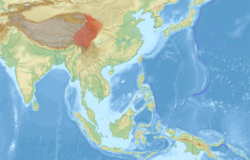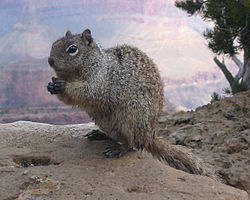| Chinese giant flying squirrel | |
|---|---|
| Scientific classification | |
| Kingdom: | Animalia |
| Phylum: | Chordata |
| Class: | Mammalia |
| Order: | Rodentia |
| Family: | Sciuridae |
| Genus: | Petaurista |
| Species: | P. xanthotis |
| Binomial name | |
| Petaurista xanthotis (A. Milne-Edwards, 1872) | |
 | |
The Chinese giant flying squirrel (Petaurista xanthotis) is a species of rodent in the family Sciuridae. It is endemic to China. It inhabits high-elevation spruce forests in China and feeds nocturnally on young shoots, leaves, and pine nuts. It nests in trees but does not hibernate. Its litter size averages two. [2]



